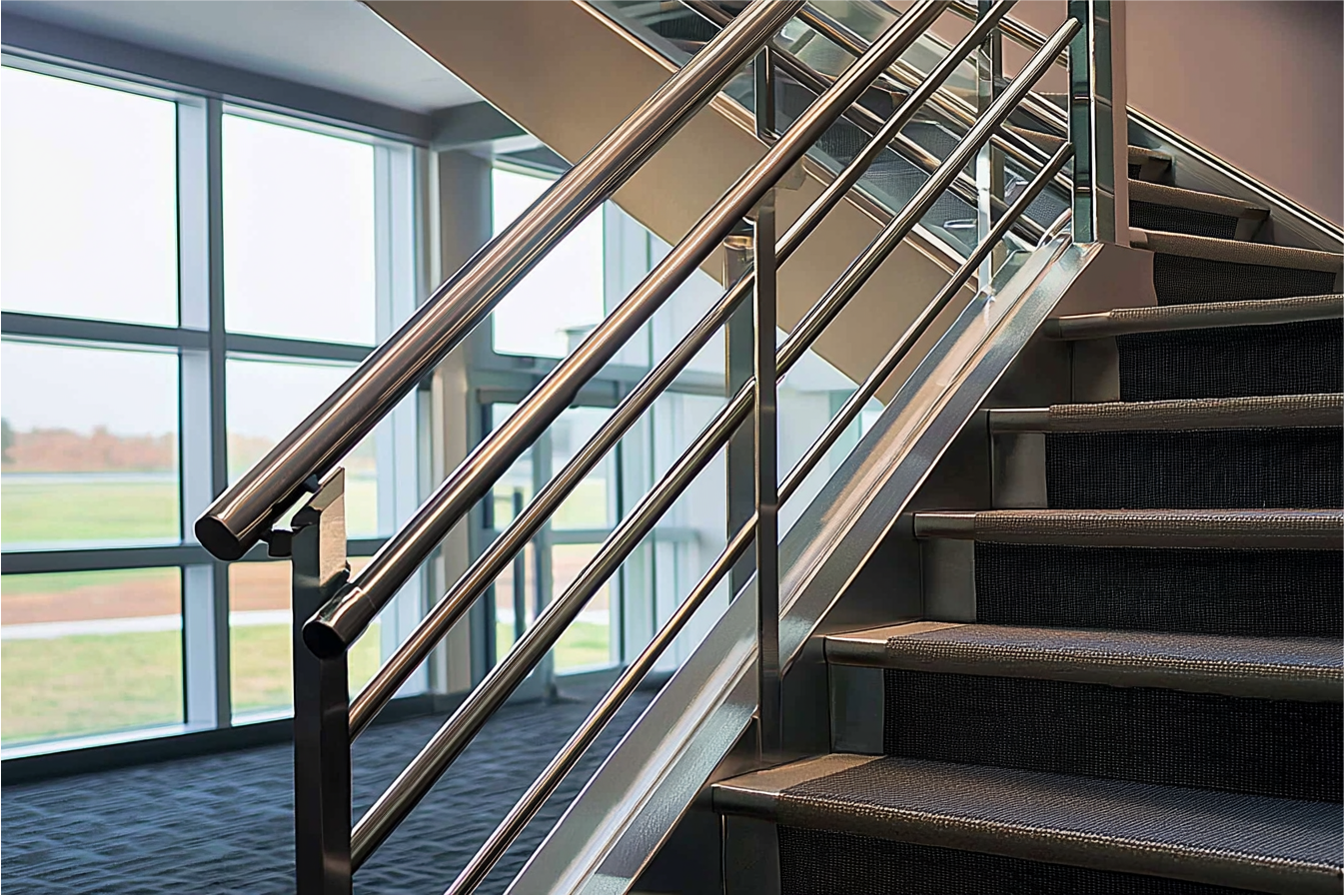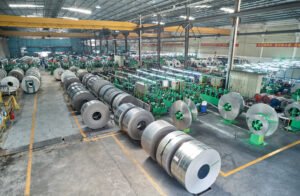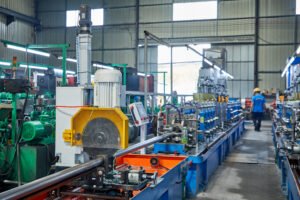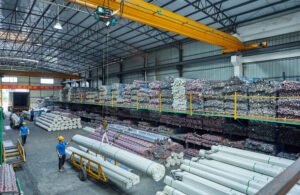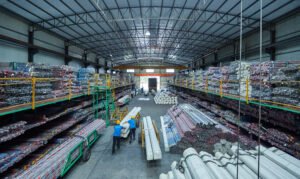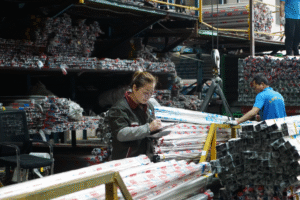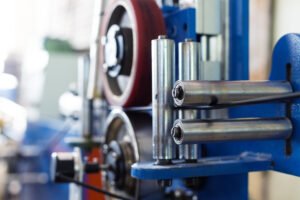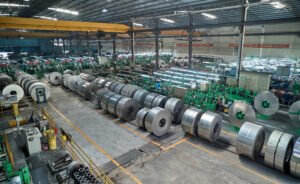Stainless Steel Pipes for Desalination Plants: Material Selection Guide
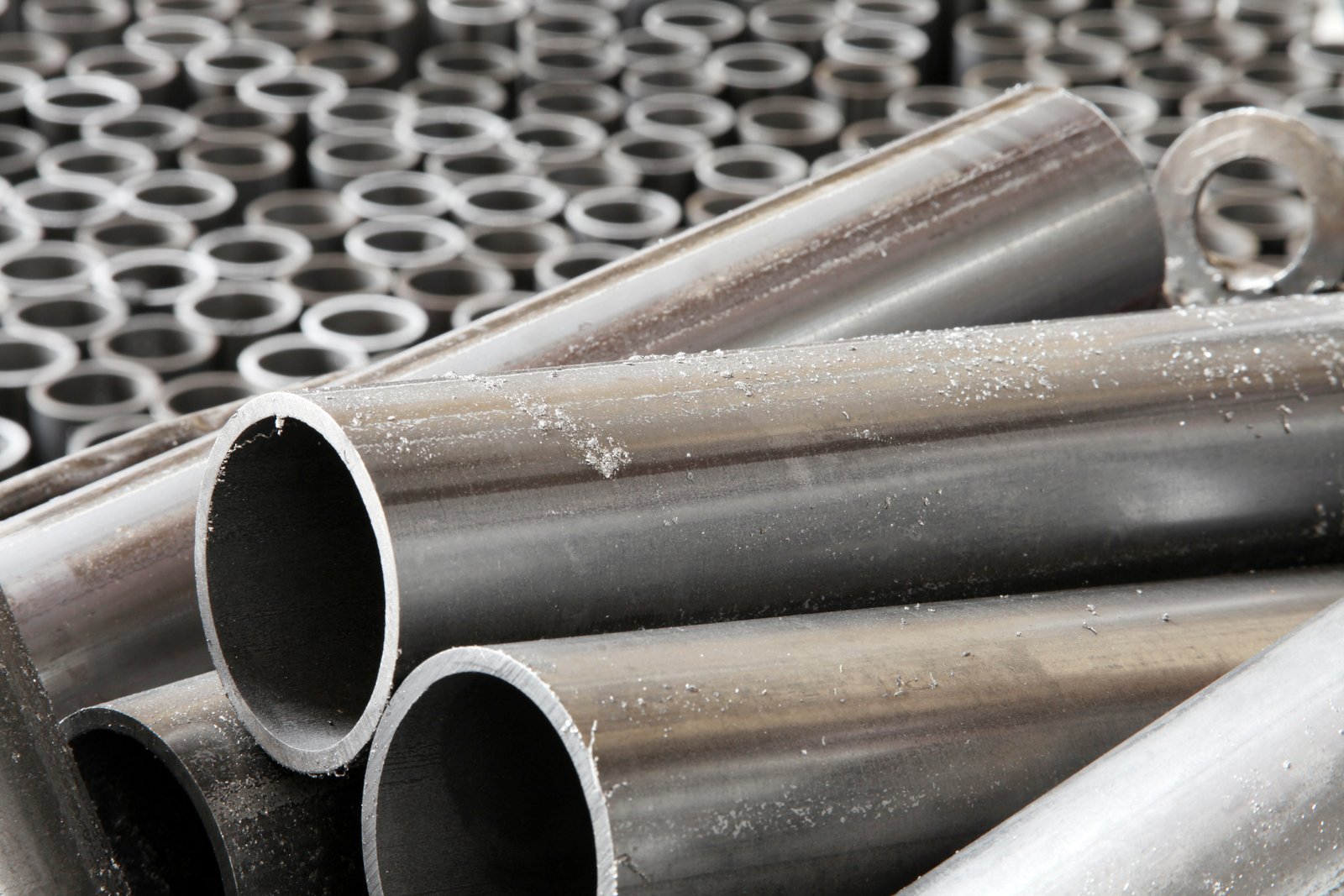
Struggling to select the right materials for your desalination plant piping? The aggressive saline environment can cause premature failure and costly downtime, turning a critical infrastructure project into a recurring maintenance nightmare. Choosing incorrectly puts your entire operation at risk from day one.
Selecting the right grade of stainless steel pipe is crucial for the longevity and efficiency of desalination plants. Materials must withstand high pressures and severe chloride-induced corrosion, making grades like duplex and super duplex stainless steel essential for critical applications, ensuring operational reliability and optimizing lifecycle costs.
The challenge of material selection is more than just a technical puzzle; it's a critical business decision that impacts your project's budget, timeline, and long-term viability. The wrong choice can lead to catastrophic failures, while the right one ensures decades of reliable service. This guide will walk you through the complexities, from understanding the environmental challenges to implementing the most cost-effective, long-term solutions. As Global Business Director for MFY, I've seen firsthand how strategic material choices define project success, and I'm here to share those insights with you.
The decision is not merely about specifying a particular grade of steel. It's about understanding the entire ecosystem of the desalination process—from seawater intake to brine disposal. Factors like water temperature, salinity, chemical treatments, and operating pressures create a unique and unforgiving environment. A material that performs well in one part of the plant may fail catastrophically in another. This requires a nuanced, zone-based approach, balancing performance with cost. In my experience, the most successful projects are those where contractors and suppliers collaborate closely from the design phase, leveraging specialized knowledge to forecast material behavior over the plant's entire lifecycle. This guide is built on that principle of collaborative expertise, aiming to provide a clear framework for making these critical decisions.
Background on the use of stainless steel in desalination plants
Early desalination plants were often plagued by material failures, leading to unexpected operational shutdowns and soaring maintenance costs. Using traditional materials like carbon steel in desalination plants1 was a recipe for disaster, undermining the feasibility of these vital water sources.
Stainless steel became the material of choice in desalination plants primarily for its inherent corrosion resistance against high-concentration chlorides and its superior mechanical strength, which is essential for withstanding the high-pressure conditions of processes like reverse osmosis (RO).
Understanding this history is not just an academic exercise; it’s a crucial lesson in lifecycle cost management. The initial savings from using cheaper materials were consistently erased by the high costs of repairs, replacements, and unscheduled downtime. This evolution in material science is what made modern, large-scale desalination economically viable. At MFY, we have been part of this journey, witnessing how the shift to robust alloys has transformed the industry. We haven't just been suppliers; we've been partners with engineering contractors who learned these lessons the hard way. They came to us seeking not just pipes, but a permanent solution to corrosion issues that threatened their projects' profitability. This move from reactive maintenance to proactive material selection marks a significant maturation of the industry, where the focus has shifted from short-term capital expenditure to long-term operational excellence and asset longevity. This historical context provides the foundation for all modern material selection guidelines, emphasizing that in desalination, the initial cost of a material is only a small part of its true, lifelong cost. The insights gained from past failures are now the bedrock of reliable plant design, ensuring that new facilities are built to last and deliver clean water consistently and affordably.
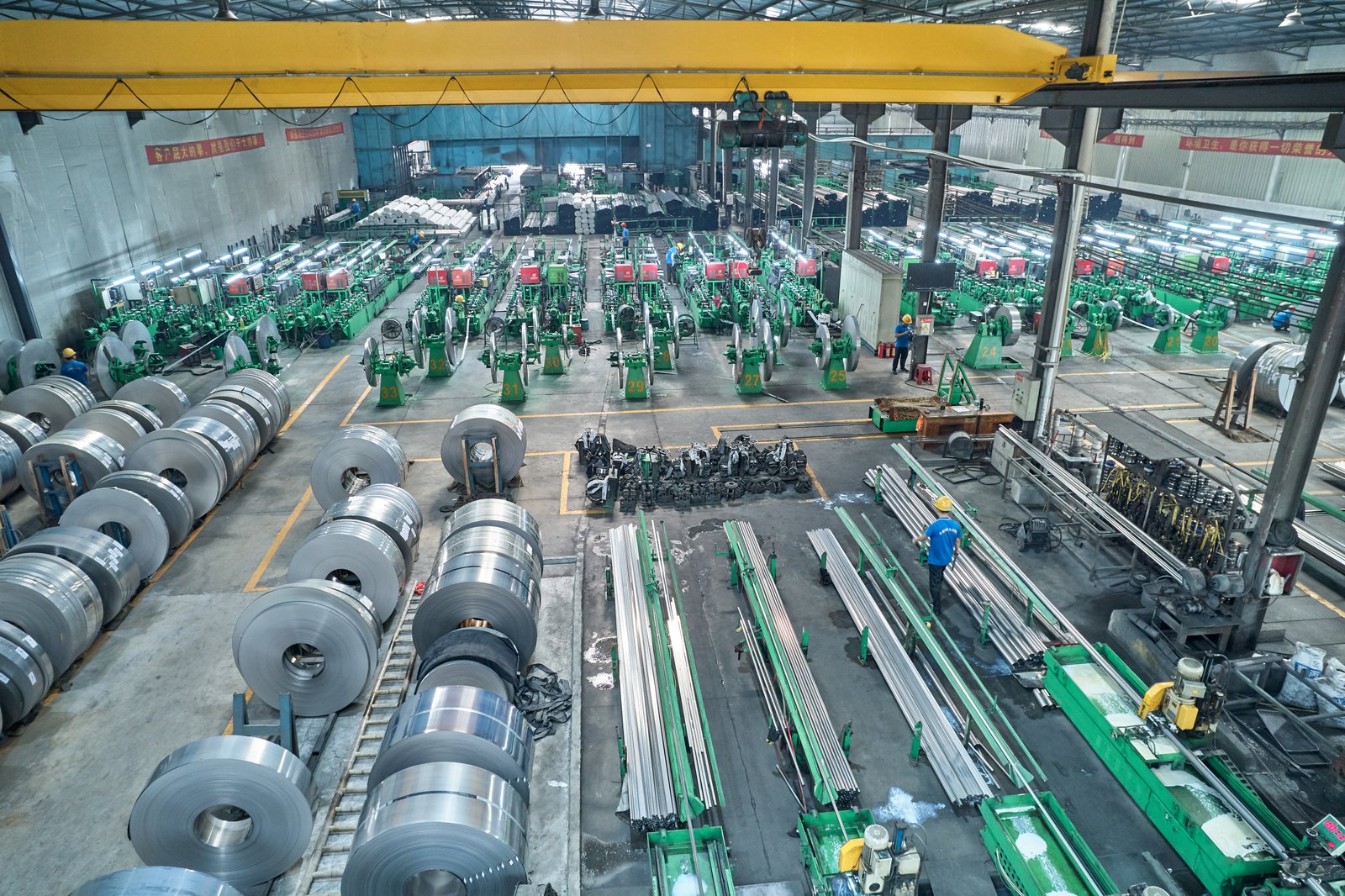
The journey of materials in desalination is a powerful narrative of innovation driven by necessity. Initially, designers and engineers relied on materials that were well-understood in other marine applications, but they soon discovered that desalination plants presented a far more aggressive challenge.
The Dawn of Desalination: Early Material Challenges
In the pioneering days of desalination, particularly with Multi-Stage Flash (MSF) and later, Reverse Osmosis (RO) technologies, carbon steel was a common choice for piping, primarily due to its low initial cost and familiarity. However, its vulnerability in high-chloride, oxygenated water environments quickly became apparent. Rapid and often unpredictable corrosion led to leaks, reduced flow efficiency due to tuberculation, and contamination of the product water. To combat this, complex and expensive coating and lining systems were employed. While these provided a temporary barrier, they were susceptible to mechanical damage during installation and holidays (small defects in the coating) that would lead to intense localized corrosion, often more aggressive than on uncoated steel.
I recall a conversation with a senior engineer from a construction firm in India who recounted their experience with a plant built in the early 2000s. They used cement-lined carbon steel for low-pressure pipework, which seemed like a cost-effective solution. However, within five years, hairline cracks in the lining allowed high-salinity water to seep through, causing hidden corrosion of the steel beneath. The first sign of trouble was a catastrophic pipe burst that halted plant operations for over a week, a costly lesson in the limitations of barrier protection in such a demanding application. The maintenance costs and operational risks quickly demonstrated that a fundamentally more resilient material was required.
This era highlighted a critical principle that we at MFY now champion: material selection must be based on inherent properties, not just on surface-level protection. The cost of failure, both in direct repairs and lost water production, far outweighs the initial savings of using a less robust material. This realization pushed the industry to explore alloys that were intrinsically resistant to the unique corrosive cocktail found in desalination plants.
The Rise of Stainless Steel: A Paradigm Shift
The introduction of austenitic stainless steels, particularly Grade 316L (UNS S31603), marked a significant turning point. Its chromium content forms a passive, self-healing chromium oxide layer that provides excellent protection against general corrosion. Molybdenum was a key addition, enhancing resistance to the pitting and crevice corrosion initiated by chloride ions. For the less aggressive parts of a desalination plant, such as low-pressure lines and tanks, 316L provided a reliable and economically viable solution that dramatically reduced maintenance needs compared to its carbon steel predecessors.
However, as RO technology advanced, operating pressures increased to improve efficiency, and water temperatures in regions like the Middle East were consistently high. Under these more demanding conditions, even 316L began to show its limits, especially in areas with welds, flanges, or stagnant flow, which are prone to crevice corrosion. This led to the adoption of higher-alloyed austenitic grades and, more importantly, the introduction of duplex stainless steels. Duplex grades, with their mixed austenitic-ferritic microstructure, offered a dual advantage: significantly higher strength than 316L (allowing for thinner pipe walls and weight savings) and superior resistance to chloride stress corrosion cracking and pitting.
A pivotal moment was the development and application of duplex stainless steel 22052. It offered a Pitting Resistance Equivalent Number (PREN) of over 35, a significant step up from 316L's ~25. This made it suitable for the high-pressure sections of Seawater Reverse Osmosis (SWRO) plants. This shift wasn't just about swapping one material for another; it represented a new design philosophy focused on lifecycle value. The higher upfront cost of duplex steel was justified by its vastly extended service life, minimal maintenance requirements, and enhanced operational reliability.
MFY's Role in Modern Desalination Infrastructure
At MFY, we have positioned ourselves at the forefront of this evolution. Our role extends beyond simply supplying stainless steel tubes; we act as consultants, helping engineering and construction contractors navigate the complex landscape of material selection. Our fully integrated supply chain, from raw materials to finished pipes, allows us to provide a comprehensive range of products, from standard 316L for non-critical applications to advanced super duplex grades for the most aggressive environments. This capability is crucial for optimizing project costs without compromising on safety or longevity.
For instance, on a recent project in Southeast Asia, our client, an engineering contractor, was designing a large-scale SWRO plant. Their initial design specified super duplex for nearly all seawater-facing pipework, which was driving up costs significantly. Our technical team collaborated with them, conducting a thorough analysis of their process flow diagram. We proposed a zone-based approach: using super duplex only for the most critical high-pressure pump discharge and brine reject lines, standard duplex 2205 for medium-pressure sections, and 316L for pre-treatment and product water lines.
This tailored material map, supported by our ability to supply all three grades with full traceability and rapid delivery, saved the project nearly 15% in piping material costs. More importantly, it ensured that the right material was in the right place, delivering performance where it was needed most while managing the overall budget effectively. This is the value of an integrated, innovation-driven partner—we provide not just steel, but smarter solutions.
Duplex stainless steel resists chloride corrosionTrue
Duplex stainless steels like 2205 have superior resistance to chloride-induced pitting and stress corrosion cracking compared to standard austenitic grades.
Carbon steel is ideal for desalination pipesFalse
Historical evidence shows carbon steel fails rapidly in desalination environments due to chloride corrosion, despite its lower initial cost.
Current material selection trends for desalination plant piping
The science of materials is constantly evolving, and specifying materials based on outdated standards can leave a new plant vulnerable. Keeping pace with the latest trends is a significant challenge for busy engineers and project managers, creating a risk of under-performance.
Current trends in desalination piping are moving decisively towards higher-alloyed materials. Duplex and super duplex stainless steels are increasingly becoming the standard for high-pressure, high-salinity applications, chosen for their superior corrosion resistance and high strength, which optimizes the total lifecycle cost.
This shift isn't driven by a desire for over-engineering; it's a calculated response to the industry's demand for greater reliability and longer plant life. As new desalination projects are built in more challenging environments and existing plants are pushed to increase efficiency, the limitations of traditional materials like 316L become more apparent. The trend towards duplex grades is a direct reflection of a better understanding of lifecycle cost analysis, where the higher initial investment is more than offset by decades of trouble-free operation. I’ve worked with numerous distributors and engineering contractors who are now exclusively quoting duplex stainless steel for the high-pressure side of any new SWRO project. They've learned from experience that call-backs for corrosion-related failures are not only costly but also damage their reputation. This proactive adoption of superior materials is now seen as a competitive advantage. At MFY, our robust inventory and production capacity for duplex and super duplex pipes are a direct response to this growing market demand, ensuring our clients can access the materials they need to build the next generation of resilient and efficient desalination plants.
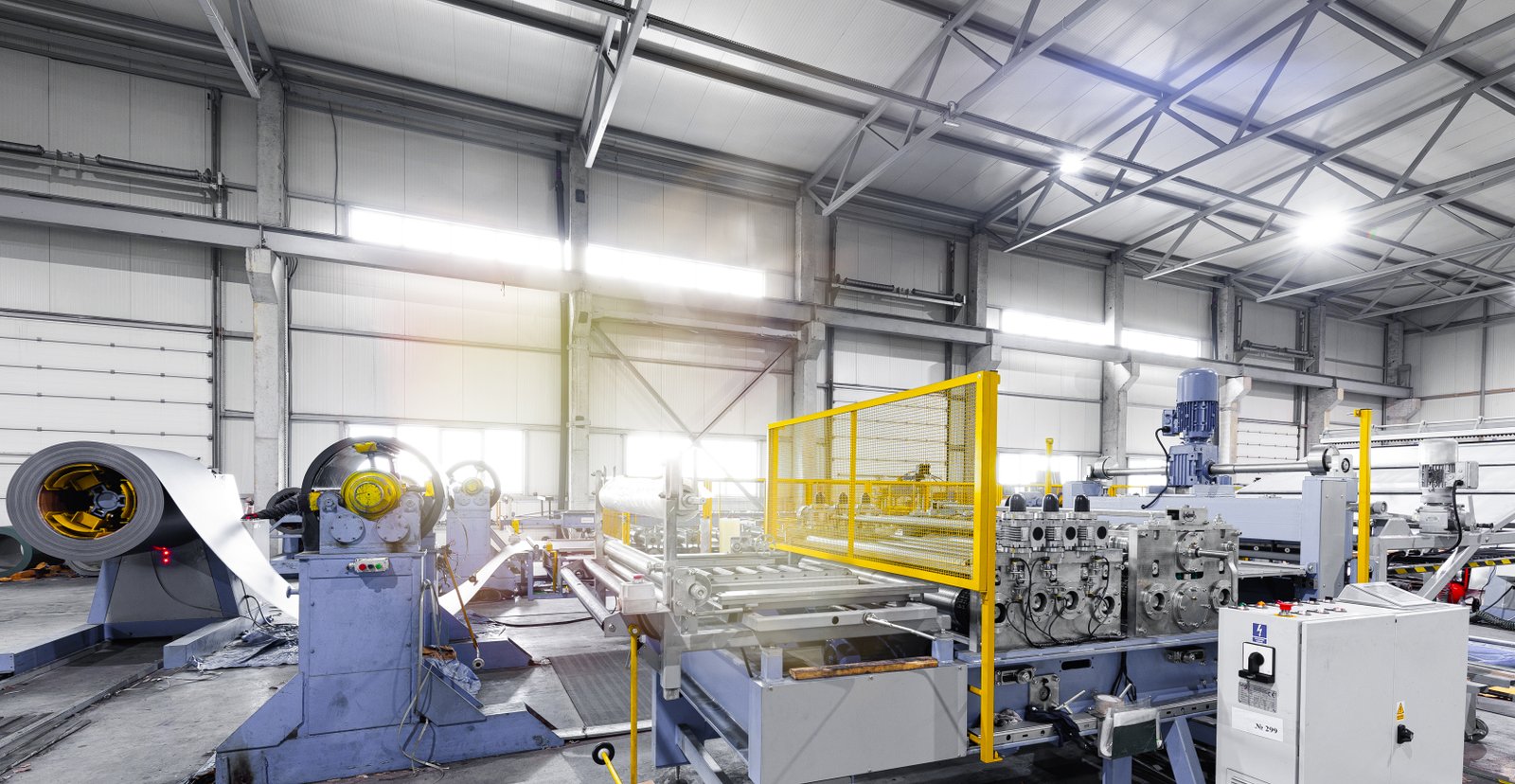
The modern approach to material selection in desalination plants is sophisticated and data-driven. The industry has moved beyond a one-size-fits-all mentality and now embraces a more nuanced strategy that leverages the unique advantages of advanced alloys. This trend is most evident in the widespread adoption of duplex stainless steels.
The Move Towards Duplex and Super Duplex Steels
The primary driver behind the shift from austenitic steels like 316L to duplex and super duplex grades is the pursuit of superior performance in the face of extreme conditions. Duplex stainless steels, such as 22053, offer a "best of both worlds" scenario. Their microstructure, a balanced mix of austenite and ferrite, gives them a yield strength roughly double that of 316L. From a design perspective, this is a game-changer. It allows engineers to specify pipes with thinner walls for the same pressure rating, leading to significant weight and, consequently, cost savings, not only in the material itself but also in supporting structures and installation logistics.
More critically, however, is the enhanced corrosion resistance. The key metric here is the Pitting Resistance Equivalent Number (PREN), an empirical formula ($PREN = \%Cr + 3.3 \times \%Mo + 16 \times \%N$) that predicts a material's resistance to localized pitting corrosion. Super duplex grades like 2507 (UNS S32750), with a PREN typically exceeding 40, are specified for the most aggressive zones in a desalination plant, such as the high-pressure concentrate (brine) lines, where chloride concentrations and temperatures are at their peak. Their resistance to stress corrosion cracking (SCC), a failure mode to which austenitic steels are susceptible in hot chloride environments, is another decisive factor.
The table below provides a clear comparison, illustrating why this trend has gained such momentum. The performance gap between 316L and the duplex family is not incremental; it's a leap in capability that directly translates to increased plant reliability and longevity. This data is the foundation of modern desalination design standards.
| Material Grade | Typical PREN | Yield Strength (MPa) | Key Application Areas in Desalination |
|---|---|---|---|
| 316L (Austenitic) | ~25 | ~220 | Low-pressure, pre-treatment, product water, chemical dosing |
| 2205 (Duplex) | ~35 | ~450 | High-pressure SWRO lines, pump manifolds, energy recovery devices |
| 2507 (Super Duplex) | >40 | ~550 | Brine concentrate lines, heat exchanger tubing, high-temperature zones |
This clear hierarchy of performance allows for the zone-based selection strategy that defines modern plant design, ensuring optimal material use across the entire system.
Case Study: A Middle Eastern RO Plant Upgrade
To illustrate this trend in action, consider a case I was personally involved with. A major engineering contractor in the UAE was undertaking a capacity expansion and efficiency upgrade for a 10-year-old SWRO plant. The original high-pressure piping, made of 316L, had suffered from severe crevice corrosion at flange connections and pitting along several weld seams. The maintenance team was in a constant battle, with leakages causing costly unscheduled shutdowns. The client’s objective was clear: the upgraded sections needed to be virtually maintenance-free for the next 20 years.
Their initial plan was to replace the failing 316L sections with the same material, assuming improved fabrication quality would solve the problem. After a detailed consultation, our team at MFY presented a comparative lifecycle cost analysis. We demonstrated that while the upfront material cost for using Duplex 2205 pipes would be approximately 30-40% higher than 316L, the total cost of ownership would be significantly lower. Our analysis factored in the elimination of downtime costs, reduced inspection frequency, and the avoidance of any replacement costs over a 20-year horizon.
Convinced by the data, the contractor revised their specification to Duplex 2205 for all new high-pressure pipework. MFY leveraged its strong inventory and rapid export capabilities to deliver the required pipes and fittings to the site in Dubai well ahead of the shutdown schedule. Two years post-upgrade, the plant has reported zero corrosion-related issues in the new sections. The client now uses this project as their internal benchmark, making duplex steel their standard for all future seawater applications. This real-world example underscores the market's shift from focusing on initial capital expenditure to prioritizing long-term reliability and total cost of ownership.
The Influence of Digitalization and Smart Supply Chains
The trend towards advanced alloys is also enabled by parallel advancements in supply chain management. In the past, a key barrier to using specialized materials like super duplex was availability and lead times. A contractor in a remote location couldn't afford to wait months for a critical component. Today, digitalization has transformed this landscape. At MFY, for instance, we have implemented a fully digital inventory management system that is integrated with our production scheduling. This provides our clients with real-time visibility into our stock of specialized products like stainless steel tubes in various duplex grades.
This digital backbone allows for what we call "supply chain agility." When an equipment integrator in Russia needs a specific set of super duplex tubes for a brine heater, they can get an accurate delivery timeline instantly. Our system connects their order directly to our warehousing and logistics network, which is optimized for rapid export to our key markets. This eliminates the uncertainty and long delays that once made specifying these materials risky from a project management perspective.
Furthermore, this digital thread ensures complete traceability. From the melt shop to the final pipe, every piece is tracked, and its Material Test Certificate (MTC) is digitally linked. For contractors building critical infrastructure like desalination plants, this level of quality assurance is non-negotiable. The trend towards using superior materials is therefore inextricably linked to the ability of suppliers like MFY to deliver them reliably, quickly, and with guaranteed quality.
Duplex steels have higher PREN than 316LTrue
Duplex 2205 has PREN ~35 while 316L has PREN ~25, making duplex grades more resistant to pitting corrosion.
316L is better for high-pressure brine linesFalse
Super duplex 2507 is specified for aggressive zones like brine lines due to its PREN >40 and SCC resistance.
Challenges faced in desalination environments
A desalination plant is one of the most hostile industrial environments for metallic materials. Simply specifying "stainless steel" is insufficient, as the unique combination of high pressures, temperatures, and aggressive chemical species can defeat even seemingly robust alloys if not chosen carefully.
The core challenges in desalination environments include severe localized corrosion, such as pitting and crevice corrosion, driven by high chloride concentrations. Additionally, microbiologically influenced corrosion (MIC), stress corrosion cracking in high-temperature systems, and erosion-corrosion from high-velocity flows pose significant threats to plant integrity.
Navigating these challenges requires a deep, granular understanding of corrosion mechanisms. It's not enough to know that salt water is corrosive; you need to understand how it attacks different materials under varying conditions. For example, a seemingly minor design choice, like the shape of a gasket, can create a crevice that becomes the focal point for catastrophic failure. This is where specialized expertise becomes invaluable. Over my years in this industry, I have seen projects compromised by a failure to appreciate these nuances. An engineering firm might select a high-grade alloy but fail to specify the correct welding procedure, inadvertently creating a weak point. At MFY, we see our role as helping clients anticipate these hidden risks. We bridge the gap between material science and practical application, ensuring that the materials selected are not only appropriate for the environment but are also handled and installed in a way that preserves their inherent protective properties. This proactive approach to mitigating challenges is fundamental to building a truly resilient and long-lasting desalination facility, transforming potential vulnerabilities into points of strength through careful planning and execution.
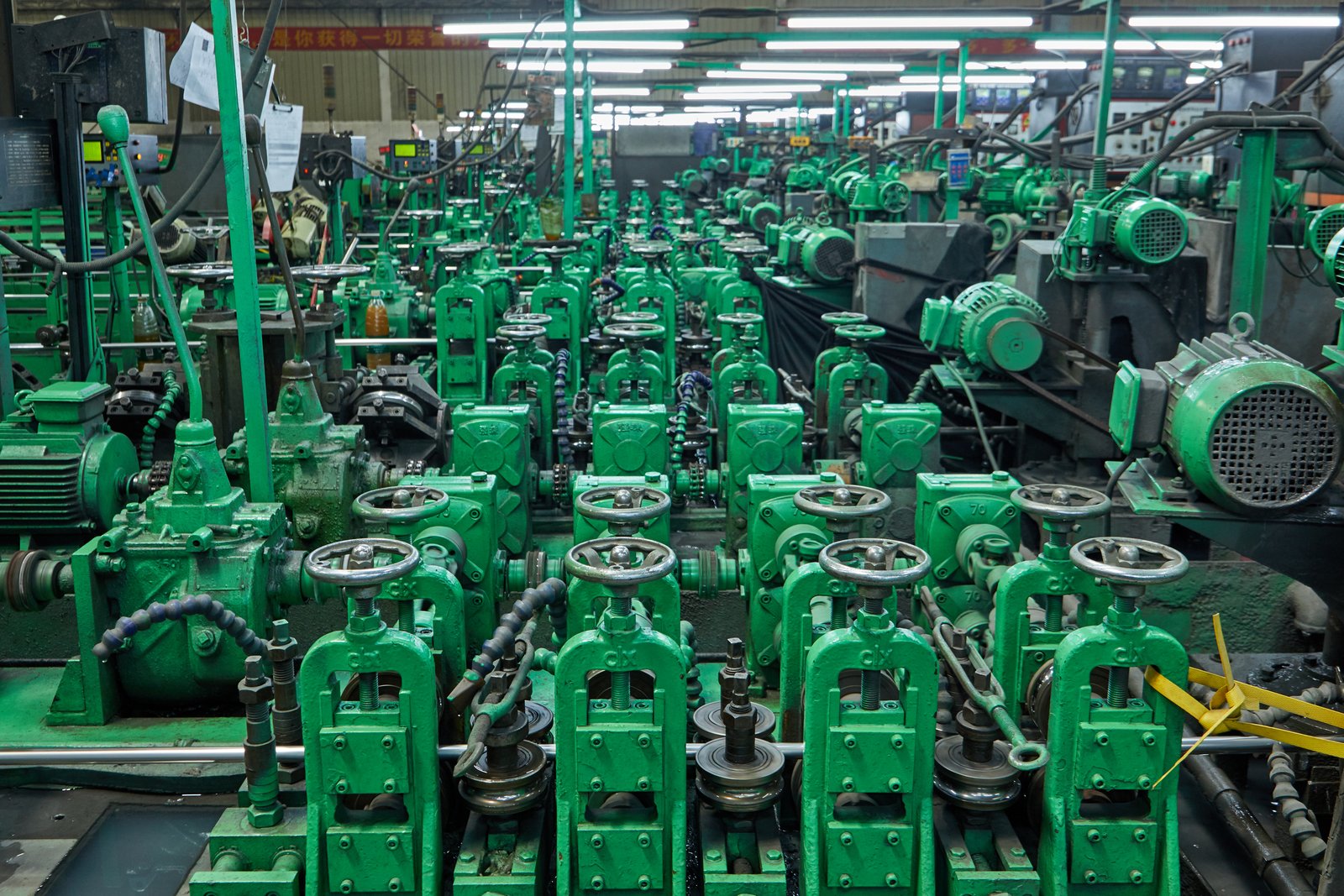
The performance and longevity of stainless steel piping in a desalination plant are dictated by a constant battle against a multifaceted array of environmental and operational challenges. A successful material selection strategy is one that meticulously accounts for each of these threats, recognizing that they often work in concert to accelerate degradation.
Understanding the Corrosive Cocktail: Chlorides, Temperature, and Pressure
The single most significant challenge is the high concentration of chloride ions in seawater. Chlorides are uniquely aggressive towards the passive protective layer (chromium oxide) that gives stainless steel its corrosion resistance. They can cause this layer to break down locally, initiating pitting corrosion—the formation of small, deep cavities that can perforate a pipe wall surprisingly quickly. The susceptibility to this is why the PREN4 is such a critical parameter. A higher PREN, derived from increased chromium, molybdenum, and nitrogen content, indicates a more stable and resilient passive layer, capable of resisting chloride attack. Crevice corrosion is an even more insidious form of localized attack that occurs in tight, shielded areas where stagnant conditions can develop, such as under gaskets, at flange faces, and in threaded connections. Within these crevices, chloride concentration, acidity, and depletion of oxygen create a hyper-aggressive microenvironment that can corrode even highly resistant alloys.
Temperature exacerbates these issues significantly. As a general rule, corrosion rates double with every 10°C increase in temperature. In warmer climates like the Middle East or in specific processes like the brine heater of an MSF plant, this thermal effect dramatically shortens the time to failure for inadequately specified materials. This is why super duplex steels, with their robust PREN values, become essential in any part of the plant operating at elevated temperatures.
Pressure, while not a direct corrosion driver, plays a critical role in the consequence of failure. In the high-pressure section of an SWRO plant, where pressures can exceed 70 bar (1000 psi), a small corrosion pit rapidly becomes a leak, and a leak can lead to a significant rupture. The high strength of duplex steels is therefore a crucial safety and operational feature, providing a greater margin of safety against burst failure. The combination of these three factors—chlorides, temperature, and pressure—creates a synergistic threat that demands the highest level of material performance.
Biofouling and Microbiologically Influenced Corrosion (MIC)
A less understood but equally critical challenge is biofouling and the resulting Microbiologically Influenced Corrosion (MIC). Seawater is teeming with microorganisms that readily attach to pipe surfaces, forming a biofilm. This layer, often referred to as slime, is not inert. It creates a new environment at the pipe surface, one that is often depleted of oxygen and can trap corrosive species. Within and beneath this biofilm, certain types of bacteria can actively influence the corrosion process. For example, sulfate-reducing bacteria (SRB) can produce hydrogen sulfide, which is extremely corrosive to many steels.
MIC often manifests as severe, localized pitting that can be difficult to distinguish from standard chloride pitting without metallurgical analysis. This makes it a particularly dangerous failure mechanism. The challenge is twofold: preventing the biofilm from forming in the first place (biofouling control) and selecting materials that are inherently more resistant to MIC. While chemical treatments like chlorination are used to control biofouling, they can also increase the overall corrosivity of the water, creating a difficult balancing act.
From a material perspective, alloys with higher molybdenum and nitrogen content, such as super duplex steels, have shown enhanced resistance to MIC. Furthermore, the surface finish of the pipe plays a role; smoother surfaces can be less prone to initial biofilm adhesion. I recently consulted with a construction contractor in Southeast Asia whose 316L intake pipes were showing premature pitting. Our analysis, in partnership with a corrosion laboratory, identified MIC as the primary culprit. Our recommendation was to upgrade to Duplex 2205 not just for its higher PREN, but because its composition is known to offer better performance against common marine microbes, providing a more holistic defense against the full spectrum of environmental threats.
Operational Hurdles: From Fabrication to Maintenance
The challenges are not confined to the service environment alone; they extend throughout the project lifecycle, from fabrication to installation and maintenance. The advanced alloys that provide superior corrosion resistance also require more specialized knowledge to work with. Welding duplex and super duplex stainless steels, for example, is a much more demanding process than welding austenitic grades. The key is to control the heat input and cooling rate to maintain the balanced austenite-ferrite microstructure. If welded improperly, the heat-affected zone (HAZ) can become susceptible to corrosion, negating the benefits of the parent material.
This necessitates the use of qualified welders, specific welding procedures (WPS), and the correct filler metals. At MFY, we consider it part of our responsibility to provide this technical support. For a large-scale project in Russia, we didn't just ship the pipes; we sent a technical specialist to the fabrication yard to provide on-site training for the contractor's welding team. We reviewed their WPS and made recommendations on gas purging and post-weld cleaning, ensuring the integrity of every joint.
Post-weld cleaning itself is a critical step. Any "heat tint" or scale left on the surface after welding is a potential corrosion initiation site. Proper cleaning through methods like pickling and passivation is essential to restore the passive layer to its full protective capacity. Furthermore, simple mishandling during transport or installation—such as contact with carbon steel tools, which can leave behind iron particles and cause galvanic corrosion—can compromise the material before it even enters service. These operational hurdles highlight that successful implementation depends on a combination of the right material and the right procedures, demanding a close partnership between the material supplier and the contractor.
Chlorides cause pitting corrosionTrue
Chloride ions break down stainless steel's passive layer, creating localized pits that can perforate pipes.
Biofilms protect against corrosionFalse
Biofilms create oxygen-depleted zones that trap corrosive agents and accelerate microbiologically influenced corrosion (MIC).
Optimal solutions for material selection in desalination plants
Choosing a material for a desalination plant is a high-stakes balancing act. Over-engineering with the most expensive alloys across the board is financially unsustainable, while under-engineering by using cheaper materials in critical areas guarantees future failure and operational losses.
The optimal solution is a zone-based material selection strategy, meticulously matching stainless steel grades to specific process conditions. This involves using super duplex for the most aggressive zones, duplex for intermediate-pressure areas, and austenitic grades for low-intensity applications, thereby optimizing both performance and lifecycle cost.
This strategic, targeted approach moves beyond a simple "good, better, best" material hierarchy. It is a sophisticated engineering discipline that recognizes the diverse environments within a single desalination plant. The water entering the pre-treatment filters is fundamentally different from the high-pressure brine exiting the RO membranes. Why, then, would they require the same material? Implementing a zone-based strategy requires a deep collaboration between the end-user, the engineering contractor, and a knowledgeable material supplier. At MFY, our broad portfolio of stainless steel pipe products5 is specifically designed to support this approach. We don't push a single solution; we provide a complete toolkit. My team often works with clients during the Front-End Engineering Design (FEED) stage, mapping out their entire piping system and recommending the most cost-effective material for each segment. This ensures that capital is invested where it provides the most value—in the longevity and reliability of the plant's most critical components. This collaborative process transforms material selection from a simple procurement task into a strategic investment in the plant's long-term success.
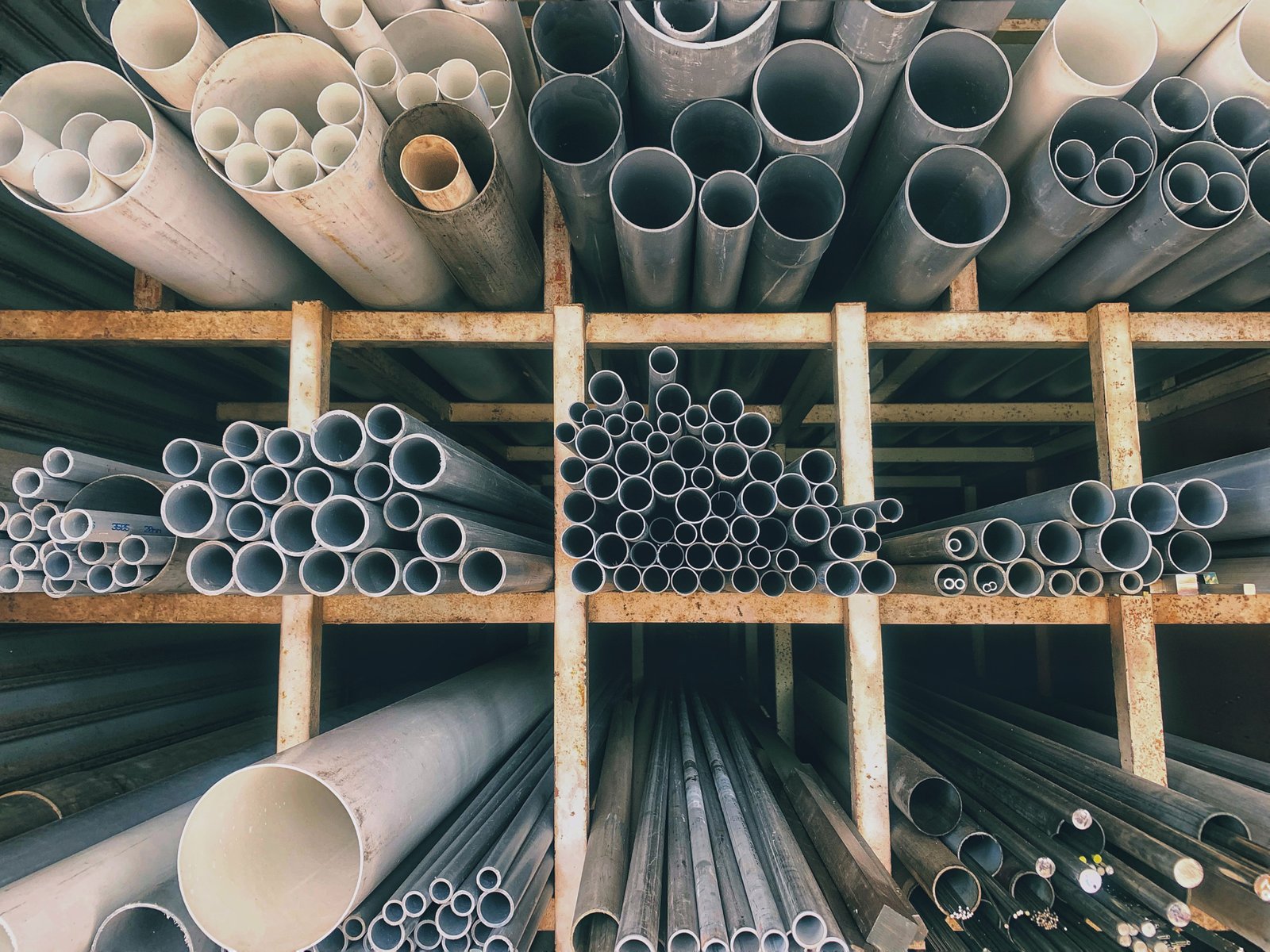
Achieving an optimal material solution for a desalination plant is not about finding a single "magic bullet" alloy. Instead, it is about implementing a holistic and economically sound strategy that ensures reliability where it matters most while controlling overall project cost. This requires a combination of a zone-based technical approach and a forward-thinking financial perspective centered on lifecycle value.
A Zone-Based Approach to Material Selection
A modern desalination plant can be systematically divided into different zones, each with a unique combination of pressure, temperature, chloride concentration, and flow velocity. An optimal selection strategy maps specific material grades to these zones, ensuring that performance requirements are met without unnecessary expense.
A typical Seawater Reverse Osmosis (SWRO) plant can be broken down as follows:
- Intake and Pre-Treatment Zone: This section handles raw seawater at low pressures and ambient temperatures. While still corrosive, the conditions are the least aggressive in the plant. Here, austenitic grades like 316L often provide adequate performance at a competitive cost. In more aggressive waters or where biofouling is a major concern, Duplex 2205 might be considered for added security.
- High-Pressure Zone: This is the heart of the RO system, encompassing the high-pressure pumps, RO membrane racks (inlet side), and interconnecting pipework. Pressures can exceed 70 bar, and any failure is critical. This is the primary domain for Duplex 2205. Its high strength allows for thinner pipe walls, and its PREN of ~35 provides the necessary resistance to pitting and crevice corrosion under high-pressure seawater conditions.
- Brine Concentrate and Energy Recovery Zone: This is arguably the most aggressive zone. The water exiting the membranes (brine or concentrate) has a significantly higher chloride concentration than raw seawater. It is often at a slightly elevated temperature and high pressure before it enters an energy recovery device (ERD). For this area, particularly the brine piping, Super Duplex 2507 is the optimal choice. Its PREN of >40 provides the ultimate security against localized corrosion in this super-concentrated saline environment.
- Post-Treatment and Product Water Zone: Once the water has been desalinated, it is referred to as permeate or product water. It has very low chloride content and is not corrosive. In this zone, materials like 316L or even 304L are perfectly suitable and highly cost-effective for handling the final product water before distribution.
This zone-based methodology ensures that the highest-cost, highest-performance materials are used judiciously, only where their properties are essential. It's a pragmatic and engineered solution that forms the backbone of modern, cost-effective plant design.
The Lifecycle Cost Analysis (LCCA) Imperative
The most significant shift in procurement philosophy for major projects has been the move from focusing on initial capital expenditure (CAPEX) to total cost of ownership, or Lifecycle Cost Analysis (LCCA). An LCCA provides a far more accurate picture of a material's true cost over the intended service life of the plant (typically 25-30 years). The formula, in its simplest form, is:
LCCA = Initial Material Cost + Installation Cost + Operational & Maintenance Costs + Downtime Cost - Salvage Value
Let's consider a practical comparison for a high-pressure SWRO line: 316L vs. Duplex 2205. The initial material cost for Duplex 2205 might be 40% higher. However, the analysis doesn't stop there. Because of its higher strength, the wall thickness of the duplex pipe can be reduced, partially offsetting the initial cost through weight savings. Installation costs may be similar, though they require different welding expertise. The real divergence comes in the operational phase. The duplex pipe, being highly resistant to the environment, will require minimal maintenance and is highly unlikely to fail. The 316L pipe, operating close to its corrosion limits, will require frequent inspections and has a significant statistical probability of failure within a 10-15 year timeframe, leading to costly replacement and, more importantly, lost revenue from plant downtime.
I worked with a manufacturing client in India that builds containerized desalination units. They initially used 316L to keep their sale price low. After several units experienced field failures within three years, their reputation suffered. We helped them switch to a Duplex 2205 system. Though their unit price increased slightly, they now market it with a 15-year warranty on the high-pressure system. Their sales increased because customers valued the reliability over the small initial saving. This is LCCA in action.
MFY's Value Proposition: Tailored Solutions and Supply Chain Efficiency
The successful implementation of these optimal solutions—both the zone-based technical strategy and the LCCA financial model—depends heavily on the capabilities of the material supplier. This is where MFY provides a distinct advantage. Our vision is not just to sell steel; it is to be a leading international trade and service brand. This means we align our business with the needs of our clients, who are building the world's critical infrastructure.
Our fully integrated supply chain is a key enabler. We have the production capacity to manufacture a wide range of stainless steel tubes, from austenitic to super duplex grades. This allows our clients to source all their piping needs for a zone-based design from a single, reliable partner, streamlining procurement and ensuring consistent quality across all materials. A distributor in the Middle East can place one order with us and receive a container with 316L, 2205, and 2507 pipes, all certified and ready for their project.
Furthermore, our strong inventory levels and rapid export delivery system mean that contractors are not penalized with long lead times for specifying the correct, advanced materials. We de-risk their project schedules. Our team's technical expertise adds another layer of value, as we can act as consultants during the design phase, helping clients perform LCCA and refine their zone-based material maps. This collaborative, solution-oriented approach is our core strength. We deliver not just the physical product, but also the confidence and assurance that the optimal material solution is being implemented correctly.
Zone-based material selection optimizes costsTrue
Matching specific stainless steel grades to different plant zones ensures performance while controlling expenses.
316L is suitable for all desalination zonesFalse
316L is only appropriate for low-intensity zones; aggressive areas require duplex or super duplex grades.
Technical recommendations for using stainless steel pipes in desalination
Procuring high-quality, advanced stainless steel pipes is only the first step. The material's superior properties can be completely undermined by improper handling, fabrication, or installation, leading to premature failure that is often mistakenly blamed on the material itself.
Key technical recommendations include strict adherence to qualified welding procedures using matching filler metals and inert gas purging. Additionally, thorough post-weld cleaning and passivation are mandatory to restore the corrosion-resistant passive layer, alongside careful handling to prevent surface contamination.
These technical details are not minor suggestions; they are critical procedures that safeguard the entire investment made in high-performance materials. I have personally investigated multiple cases where a super duplex pipe failed in service, only to find the root cause was an improper weld or iron contamination from a grinder that was previously used on carbon steel. These are heartbreakingly avoidable failures. For engineering and construction contractors, establishing a rigorous quality control program that covers every step from material receiving to final pressure testing is non-negotiable. It protects the project, the client, and their professional reputation. At MFY, we champion this comprehensive approach to quality. We provide detailed technical datasheets and handling guidelines with our products, and our support team is always available to help clients develop robust fabrication and installation protocols. We believe that delivering a quality product means ensuring it can deliver its full performance potential in the field, and that can only be achieved when excellent materials are paired with excellent workmanship. This synergy is the true key to success.
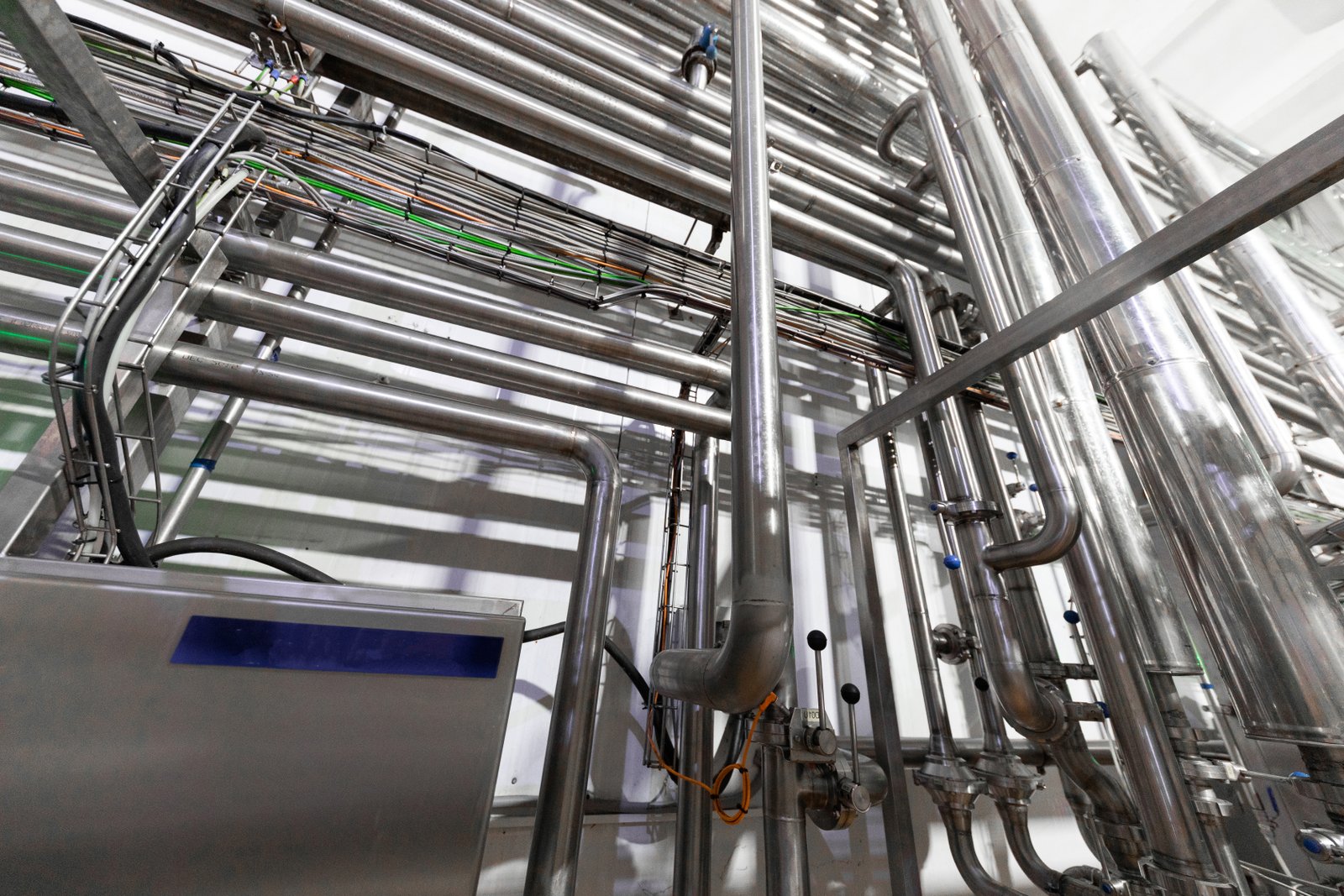
To unlock the full potential of advanced stainless steel pipes in desalination plants, a disciplined and knowledgeable approach to fabrication and installation is essential. The following technical recommendations are critical to ensuring that the designed corrosion resistance and mechanical integrity are achieved in the final constructed system.
Critical Aspects of Welding and Fabrication
Welding is the most critical process in the fabrication of a stainless steel piping system. For duplex and super duplex steels, the primary goal is to create a weld that not only is strong but also maintains the balanced 50/50 austenite-ferrite microstructure in both the weld metal and the heat-affected zone (HAZ). An imbalance in this phase ratio can dramatically reduce corrosion resistance and mechanical toughness. This requires strict control over three key variables: heat input, interpass temperature, and cooling rate. Using a qualified Welding Procedure Specification (WPS) is not just a documentation exercise; it's the recipe for success.
A crucial element is the use of the correct filler metal. For duplex steels, "matching" fillers are not used; instead, "over-alloyed" fillers are typically specified. For example, when welding Duplex 2205, a filler wire with a higher nickel content is used. This extra nickel helps promote the reformation of austenite in the weld metal as it cools, ensuring the correct phase balance and preventing the formation of detrimental intermetallic phases.
Furthermore, protecting the weld from the atmosphere during cooling is paramount. This is achieved through gas purging, typically with pure argon. For pipes, this means purging the inside of the pipe to protect the root of the weld from oxidation. Inadequate purging leads to a heavily oxidized, discolored root ("sugaring"), which acts as a massive corrosion initiation site. As a service to our equipment integrator clients, we often provide reference WPS documents and can connect them with welding experts to help train their teams on these specific requirements.
Surface Treatment and Passivation: Restoring the Protective Layer
The inherent corrosion resistance of stainless steel comes from its passive layer—an ultra-thin, invisible film of chromium oxide that forms spontaneously on the surface in the presence of oxygen. Welding, grinding, or any heat-generating process disrupts and damages this protective layer, leaving the steel vulnerable. The discolored "heat tint" seen adjacent to a weld is a thickened, less-protective oxide layer that must be removed. This is why post-fabrication cleaning is a mandatory, multi-step process.
The first step is mechanical cleaning (if necessary) with stainless steel tools, followed by chemical treatment. This involves "pickling," a process that uses a mixture of acids (typically hydrofluoric and nitric acid in a gel or bath) to remove heat tint, weld scale, and any embedded iron particles. Following a thorough water rinse, the final step is "passivation," which involves a milder acid treatment (typically nitric or citric acid) to help rapidly restore and improve the quality of the passive chromium oxide layer.
I recall a situation with a client who had installed a Duplex 2205 system but was seeing rust stains after only a few weeks of service. They were convinced the material was defective. After an on-site inspection, we traced the issue to their fabricator having used carbon steel wire brushes to clean the welds. This transferred iron particles onto the stainless surface, causing galvanic corrosion. We guided them through a proper pickling and passivation procedure, which completely resolved the issue. This story is a testament to the fact that the final surface condition is just as important as the bulk alloy chemistry.
Quality Assurance and Material Traceability
A robust Quality Assurance (QA) program underpins all technical recommendations. This begins the moment the materials arrive on site. A key procedure is Positive Material Identification (PMI). Using a handheld X-ray fluorescence (XRF) analyzer, contractors can instantly verify the alloy grade of every pipe, fitting, and flange, ensuring that a 316L component wasn't accidentally mixed into a duplex system. This simple check can prevent catastrophic mismatches.
Traceability is equally important. At MFY, our vision to become a leading international service brand is built on trust and transparency. Every pipe we produce is marked with a heat number that links it directly to a Mill Test Certificate (MTC or MTR). This document is the material's "birth certificate," detailing its exact chemical composition and mechanical properties, confirming its compliance with international standards (like ASTM or EN). Our digital systems ensure that this documentation is linked to every order, providing our clients with an unbroken chain of custody from raw material to final installation.
For a contractor building a desalination plant, this level of QA is their proof of quality to the end-user. It demonstrates due diligence and provides a permanent record of the high-quality materials used in the construction. In the event of any future questions, the data is readily available. This comprehensive approach to QA, from PMI to full traceability, transforms the procurement and fabrication process from a series of steps into an integrated system designed to deliver long-term reliability.
Over-alloyed fillers are used for duplex steelsTrue
Unlike standard stainless steels, duplex steels require fillers with extra nickel to maintain proper phase balance in welds.
Carbon steel tools can clean stainless weldsFalse
Carbon steel tools contaminate stainless surfaces, leading to galvanic corrosion - only stainless tools should be used.
Conclusion
Ultimately, the success of a desalination plant hinges on a smart, zone-based material selection strategy. Embracing advanced alloys like duplex stainless steel, guided by lifecycle cost analysis and backed by rigorous technical execution, is the optimal path to ensuring long-term reliability and economic viability.
-
Understand the corrosion challenges posed by high-salinity environments to carbon steel. ↩
-
Discover the material's advantages in resisting high-pressure corrosion. ↩
-
Discover its strength advantages and specific use cases in harsh environments ↩
-
Learn about PREN and its role in enhancing corrosion resistance in seawater applications ↩
-
Discover the variety of stainless steel products MFY offers for tailored desalination solutions. ↩
Have Questions or Need More Information?
Get in touch with us for personalized assistance and expert advice.
